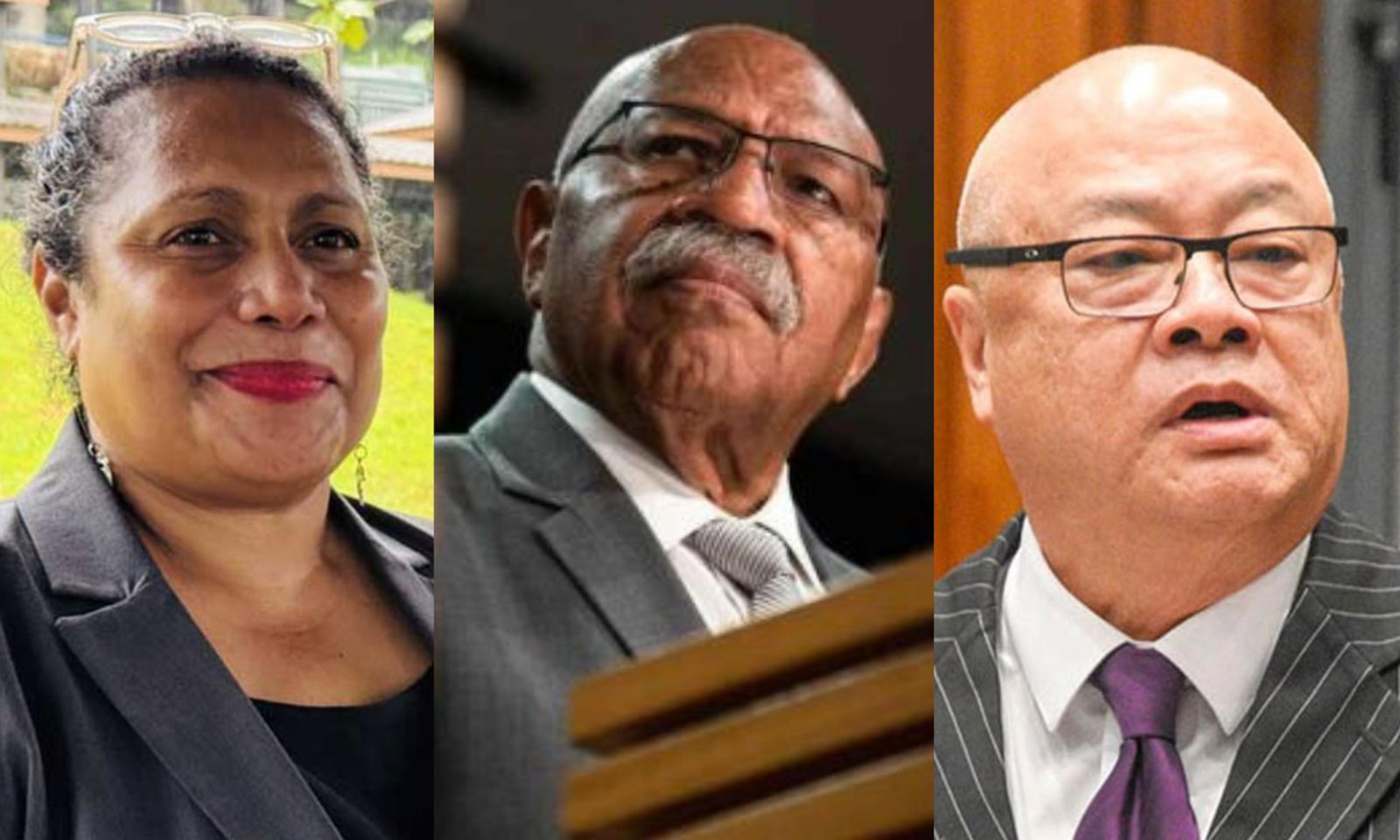

NZSL interpreter Alan Wendt is a familiar face on NZ screens, often standing behind some of our nation's well known politicians.
Photo/E-Tangata
Why everyone should learn sign language
Expert Alan Wendt says there's a growing interest among Pacific communities for the unique taonga.


The return of Three Strikes slammed as unjust and ineffective


Cook Islands says a misunderstanding has led to NZ freezing development funding

Leaked report reveals political manipulation in Fiji anti-corruption chief, key officials fired

The return of Three Strikes slammed as unjust and ineffective


Cook Islands says a misunderstanding has led to NZ freezing development funding
Sign Language is flourishing in Aotearoa and this could bring huge benefits for all those who learn it, expert Alan Wendt says.
The proud Samoan is perhaps New Zealand's top Sign Language interpreter, often seen behind the politicians during press conferences.
His journey with New Zealand Sign Language (NZSL) started on a “whim” while doing papers for his linguistics degree at Victoria University.
Watch Alan Wendt's interview below.
“I have a passion for communication and for the use of different languages," he told Pacific Mornings.
"I grew up in a family that has more than one language and it's really important to me that people have access to communication through their own language," Wendt said.
“But also for the deaf community specifically, they're a community that's very diverse, made up of people from all sorts of ethnic communities. And they deserve access to the world and to citizenship just like everyone else.
“And then I have a love for languages, so it all kind of combines nicely for me into one role as an interpreter.”
Wendt said during the Covid-19 pandemic, there was a worldwide shift that brought sign language interpreters to the foreground.
Traditionally, their roles were in closed or intimate settings such as in interviews, medical care, or education, he said.
At the time, Wendt's profile was catapulted onto NZ screens as he was often seen interpreting behind then-prime minister Jacinda Ardern.
He said that while having a public-facing role could be “at times challenging and confronting”, he had become pretty good at masking the nerves.
New Zealand Sign Language Week, organised by Deaf Aotearoa, was held last week to raise awareness of the language and culture of the country's Deaf community.
NZSL is one of the country’s three official languages, gaining that status in April 2006. Te reo Māori and English are the other two languages.
There were about 4600 deaf people in Aotearoa, data from Statistics NZ’s 2018 Census showed. However, 23,000 people used NZSL.
Pacific culture and dance are "very animated" in facial expressions and body language and Wendt says there is a growing interest among Pacific people to learn NZSL.
“I think that growing up in a culture, you know, it's part of a wider community that embraces dance and music and movement to express meaning, like to tell a story. I think that's very natural, something that we're all brought up with.
“And for me, that's translated really well into the work that I do, thinking about being very accurate with your movements and thinking about telling a story.”
Wendt says there are also advantages for hearing New Zealanders in learning sign language for communicating in noisy environments.
“I often teach some friends some basic signs so when we're in the club we can talk across the dance floor or even through windows.”
Learn some quick and easy everyday NZSL here or search for nationwide NZSL classes here.